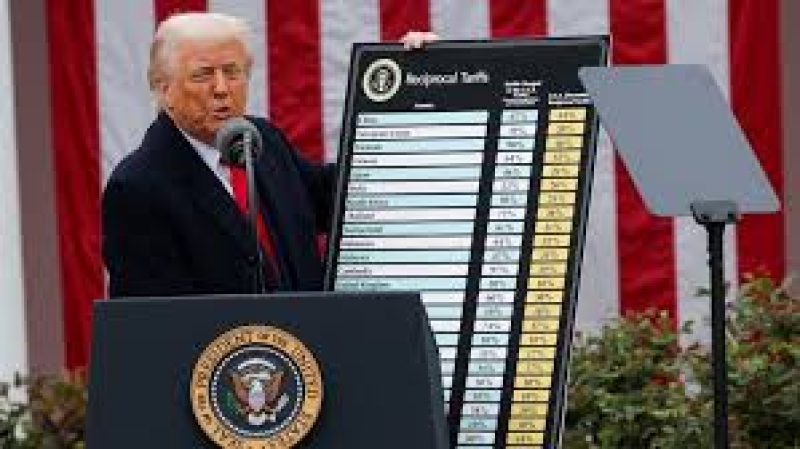- CA Yunus pays homage to Liberation War martyrs on Victory Day |
- Bangladesh capital market extends losing streak for second day |
- Bangladesh celebrates Victory Day Tuesday |
- 'Different govts presented history based on their own ideologies': JU VC |
Trump’s Tariffs Put 1,000 Bangladeshi Exporters at Risk

Global trade is facing renewed turbulence as the United States, under President Donald Trump, enforces steep retaliatory tariffs — a move that is casting a shadow over Bangladesh’s export economy. For nearly 1,000 Bangladeshi enterprises, the fallout could be particularly severe, raising alarms across the country’s business community.
The United States has been one of Bangladesh's most crucial export destinations for decades, especially for its dominant ready-made garments (RMG) sector. However, the newly introduced 37 per cent retaliatory tariff threatens to severely undermine this trade relationship. Industry insiders fear a sharp reduction in demand from American buyers, or worse, a diversion of orders to competing nations that can now offer more competitive pricing.
An analysis of recent data from the National Board of Revenue (NBR) reveals the scale of potential exposure. In the fiscal year 2023-24, a total of 7,561 Bangladeshi companies exported goods to 212 countries worldwide, generating a combined export value of USD 42.69 billion. The US alone accounted for USD 7.66 billion of this figure, spread across 2,326 Bangladeshi exporters.
Crucially, nearly 1,000 of these exporters are especially vulnerable to shifts in US trade policy. Among the 2,326 exporters trading with the United States, a concentrated group of 957 enterprises were responsible for shipping goods worth USD 5.95 billion—more than a quarter of Bangladesh’s total US-bound exports. These companies now stand at the frontline of risk as American buyers reassess sourcing strategies in the wake of rising costs.
However, not all exporters face the same level of peril. The NBR data highlights varying degrees of dependence on the US market within this group. Alarmingly, 280 enterprises are categorised as being at the highest level of risk. These companies export 100 per cent of their products exclusively to the United States, meaning any decline in US orders could be catastrophic for their survival. Though their combined export value amounts to a relatively modest USD 350 million, their total reliance on the US makes them acutely vulnerable.
Another 236 enterprises fall into the upper-medium risk category, with between 76 and 99 per cent of their total exports destined for the US. In the last fiscal year, these companies shipped products worth USD 2.27 billion, underscoring their significant exposure to the shifting dynamics of US trade policy.
Adding to the concern, a further 181 enterprises have been identified as medium risk, with between 51 and 75 per cent of their exports bound for the American market. Together, these companies generated USD 1.71 billion in export earnings during the last fiscal year.
The remainder of the vulnerable group includes an additional 260 enterprises whose risk level varies but remains significant due to their partial dependence on US orders.
Industry experts warn that the ripple effects of the tariffs could extend far beyond the immediate exporters. A slowdown in exports would not only jeopardise the profitability of these companies but could also threaten thousands of jobs across Bangladesh’s manufacturing hubs, from Dhaka to Chattogram. Suppliers, logistics providers, and workers in allied industries would all feel the strain if US buyers reduce orders or exit Bangladeshi supply chains altogether.
Furthermore, concerns are growing over the long-term reputational impact on Bangladesh’s export profile. Once global buyers shift to alternative suppliers, regaining market share can prove difficult, especially in highly competitive sectors like apparel.
Policymakers and business leaders are now urgently assessing mitigation strategies. Some exporters are exploring new markets, while industry associations are calling for government support to cushion the blow. Efforts are also underway to intensify trade negotiations and diversify export destinations to reduce dependence on any single country.
As the situation unfolds, one thing is clear: the imposition of US tariffs has placed a substantial segment of Bangladesh’s export economy in jeopardy. Without swift and strategic responses, the repercussions could resonate throughout the nation’s broader economic landscape.

